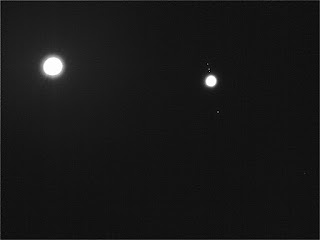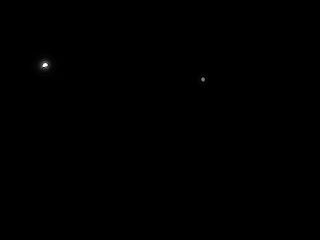I moved the scope and recentered Venus. I managed quite a few pix before the trees finally swallowed the planets.
The first image is overexposed, showing all four Galilean moons of Jupiter. The second is exposed to show the phase of Venus (about half phase, at present). If you click on the images and zoom, you can just see two belts on Jupiter.
Although the planets look very close in the sky (about 1/3 of a degree apart), they are actually about a half billion miles apart!


















